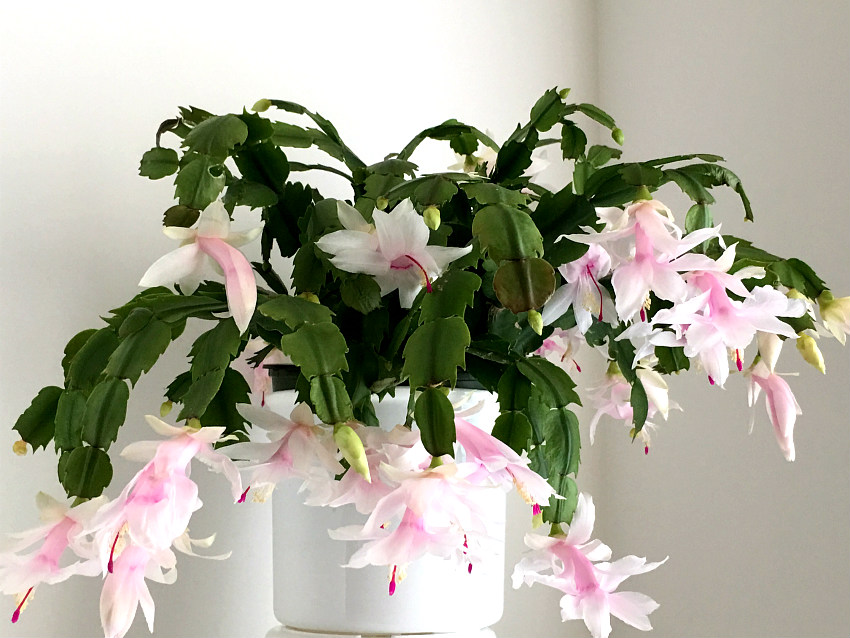Growing Christmas Cactus
Christmas Cactus (Schlumbergera) make great houseplants because they're easy growers and reliable bloomers. (And they love growing in our hydroponic system!)

Even though they're called cactus, these plants are different from common desert cactus. Rather than growing in the desert, they grow in the same "tropical" conditions most houseplants grow in. Since they're "tropical cacti", their cultural requirements are different from true cacti.
Unfortunately newly purchased plants have a tendency to shed some of their flower buds when you bring them home.
That's because they have probably endured harsh conditions traveling from where they were grown. They simply need time to adjust to their new surroundings.
Dropping flower buds does not mean your plant is dying. With a little TLC it might bloom again around Easter. (I'll show you how below.)
Tips on Caring for New Christmas Cactus When You Bring Them Home
Unfortunately newly purchased plants have a tendency to shed some of their flower buds when you bring them home.
Dropping flower buds does not mean your plant is dying. With a little TLC it might bloom again around Easter. (I'll show you how below.)
They simply need time to adjust to their new surroundings.
The first thing to know is flowers on Christmas Cactus only last for a couple of days. And the blooming cycle lasts for only a several weeks.
Here are my tips on caring for new Christmas Cactus when you bring them home.
Watering:
These plants enjoy thorough waterings with a dry period in between. Make sure your plant has drainage in the bottom of the grow pot. With proper drainage you never have to worry about over watering because excess water will drain away. The key is waiting until the pot is completely dry before rewatering - could be 2 weeks or more.
Light:
Light is not a big issue for now. Put your plant wherever it looks its best. It has built up all the energy it needs to complete the blooming cycle. Once a plant has developed flower buds, cool temperatures will have a bigger impact on blooms than light levels.
How to make flowers last longer.
- provide extra humidity. Unlike desert cactus, these plants like 40-50 percent humidity. Use a Humidity Tray or some other method to provide extra humidity to increase the life of the blooms.
- lower temperatures in the room. Just like any other flowers, Christmas cactus blooms last longer in cool temps.
- never place in cold drafts, or near heating ducts (or the fireplace) when blooming.
Coaxing Your Christmas Cactus to Bloom
Repotting Christmas Cactus into Hydroponics

